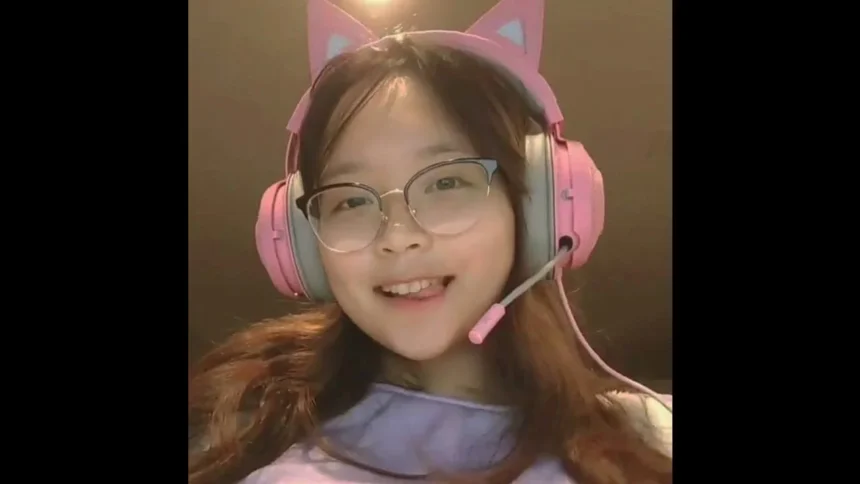In recent weeks, a dramatic, fictional narrative titled “Father Husband: The Alyssa Paldi Story” has captured attention across TikTok. Although no verifiable real person bearing the name has surfaced in mainstream media, the storyline has inspired hundreds of videos, reaction threads, and speculative commentary. In this article, we explore the origin, features, spread, cultural significance, criticisms & risks, and the legacy of this viral phenomenon known colloquially as Alyssa Paldi.
Origin & Narrative of “The Alyssa Paldi Story”
The saga begins as an exaggerated, melodramatic tale in TikTok video captions, using the style of “True Crime / Lifetime Drama” tropes. The central narrative is often framed as:
- Alyssa Paldi, allegedly a daughter, claims her father is also her husband.
- The story is styled as a tragic, twisted family secret, full of betrayal, scandal, and emotional turmoil.
- Clips often include slow revelations, dramatic music, emotional voiceovers, and “part 1/part 2” segmenting.
It is important to note: this story is almost certainly fictional or a viral creative trend, rather than a factual recounting. Searches for “Alyssa Paldi” yield no credible news articles, biographies, or primary sources confirming the person or events. The narrative resembles fan-fiction or viral storytelling more than genuine public record.
The phenomenon is analogous to other TikTok “story trends” that adopt a pseudo-documentary style (e.g. “Megan Meier Story,” “Katie Paldi Lifetime”) where creators build a shared narrative world that others expand upon.
How the Trend Spread & TikTok Mechanics
Video structure & storytelling techniques
Creators participating in the trend follow a template that helps the story spread:
- Hook in first 3 seconds: “My father… my husband… my life”
- Teaser lines: “Part 1: Secrets revealed”, “What they never told me…”
- Music & emotional editing: using melancholic instrumentals or trending dramatic audio
- On-screen text overlays narrating the plot
- Part series: splitting the story into multiple short videos (Part 1, 2, 3…) to maximize retention and watch count.
Because TikTok rewards series content and rewatching, this format is highly effective at boosting algorithmic reach.
User involvement & co-creation
One key factor in the virality is user participation:
- Viewers create reaction videos (“I don’t believe this”, “What I think really happened”)
- Duets / stitches remixing the narrative or offering alternate versions
- Some creators “invent” side stories or earlier life chapters, further propagating the lore
Thus the trend becomes collective storytelling, where no single creator owns the narrative; the fandom helps expand it.
Hashtags and discoverability
Videos use tags such as #AlyssaPaldi, #FatherHusbandStory, #TikTokDrama, #LifetimeStyle, and broad tags like #storytime, #viralstory. These tags help the content surface in discovery feeds, especially for users watching drama or storytelling content.
Additionally, because many videos are short (15–30 seconds), each part encourages viewers to click on “next,” increasing session length and boosting algorithmic weight.
Why “Alyssa Paldi” Struck a Chord: Cultural & Psychological Appeal
Gothic drama meets modern virality
The narrative taps into timeless drama motifs: forbidden relationships, shocking betrayal, family secrets. These tropes are common in soap operas and “lifetime movie” plots. By packaging them as TikTok “true stories,” the format gives them a veneer of authenticity.
Emotional voyeurism & escapism
Viewers are drawn to emotional intensity and narratives that invite speculation: Is it real? Did she make it up? The ambiguity stokes fascination. People love to interpret, theorize, and argue over what “really happened.”
Relatability & comment culture
Even though the story is extreme, people project their own idea of family conflict, trauma, or betrayal. The comment sections are full of empathy, skepticism, and shared emotional responses. The user psychology is: I want to be part of it, comment on it, believe/disbelieve it.
Network effects & virality loops
Because many people watch drama content or follow “story time” trends, TikTok’s algorithm increasingly surfaces these videos to such users. The more engagement (comments, shares), the more they get amplified — in a self-reinforcing loop.
Criticisms, Risks & Ethical Concerns
Potential for misinformation & emotional manipulation
Because the narrative is likely fictional, many watchers may assume it’s real or blur the line between fact and fiction. This encourages misinformation, emotional manipulation, and potential distress in viewers who believe they are witnessing a real trauma.
Emotional effects on vulnerable audiences
Some viewers, especially those with trauma history, might be triggered by these stories. Exposure to intense, sensational content can exacerbate anxiety, guilt, or other emotional responses.
Exploitation of tragedy tropes
Turning trauma into entertainment runs the risk of commodifying grief and suffering. Using extreme family violations as content fodder may reduce real experiences of abuse or incest to “viral tropes.”
Intellectual property & narrative attribution
Because the story is collaboratively expanded across many creators, there can be disputes over credit or intellectual ownership of segments, plot lines, or viral elements.
Platform moderation & policy compliance
TikTok policies on sensitive content, defamation, or harassment may conflict with some videos in the trend. If someone claims real wrongdoing, moderation or removal may ensue. Also, creators must be careful not to inadvertently violate community guidelines.
Comparisons with Similar TikTok Story Trends
Katie Paldi / Lifetime-style trends
The Alyssa Paldi story parallels other viral narrative arcs like “Katie Paldi Lifetime”, which likewise present dramatic, “based on real events” stories. These often follow a formula: victim betrayal, shocking twist, emotional reveal, part series. The comparison shows a pattern in how TikTok audiences consume “soapy” drama under the guise of “true story.”
“True Story / Storytime” TikTok genre
There’s a broader genre on TikTok of “storytime” videos: creators narrate personal (or pseudo-personal) stories, often dramatic or unusual. Alyssa Paldi fits into the meta-level: it is a story within the storytime genre, but one that’s likely not personal but communal fiction.
Parallels with Reddit / creepypasta / wiki lore
The trend is analogous to creepypasta, urban legends, or collaborative storytelling (e.g. Slenderman, SCP, etc.). A base narrative is created, and the community builds layers, retcons, fan theories, and side tales. TikTok’s twist is episodic video format and visual storytelling.
Legacy & Implications: What Alyssa Paldi Trend Means for TikTok Culture
The rise of “faux real” storytelling
Alyssa Paldi shows how even “nonexistent” narratives can go mass viral when formatted like “real” stories. TikTok culture now blurs the boundaries between fact, fiction, and creative fiction. Users may question anything they see: is it real or trend?
New opportunities for creators & micro-narratives
Trenders may use this template to build micro-franchises — fictional saga arcs that can sustain months of content. The “Alyssa Paldi Universe” may spawn spin-offs, side stories, alternate endings, and even monetization (ebooks, scripts, podcasts).
Algorithmic reinforcement of emotional content
Emotional, shocking stories tend to drive engagement. The success of this trend could encourage more creators to adopt sensational narratives, potentially reducing diversity in content and overemphasizing drama.
Challenges for platform trust & content moderation
As TikTok’s users consume more “story as news” content, the platform faces trust issues. Audiences may start doubting everything. Also, distinguishing real accounts of abuse from fictional ones becomes harder — moderation teams must tread carefully.
Cultural reflection of storytelling in the digital age
Alyssa Paldi is a modern variant of oral storytelling, but remixed through video, social media, and collaborative gloss. It reflects how young audiences create shared mythologies and narratives together, merging fiction and semi-documentary in novel ways.
Conclusion
The Alyssa Paldi story on TikTok is a fascinating phenomenon: a likely fictional drama presented in a format that encourages mass belief, speculation, and expansion. Though there is no documented real “Alyssa Paldi,” the narrative thrives as collaborative storytelling, part soap opera, part mythmaking, part social media experiment.
This trend underscores how TikTok users increasingly consume “stories” that hover between reality and fiction — and how creators can use that boundary to spark engagement. Whether the Alyssa Paldi saga fades or becomes a lasting TikTok “universe,” it demonstrates the evolving dynamics of digital narrative, community participation, and the blurred line between what is real and what is told.








